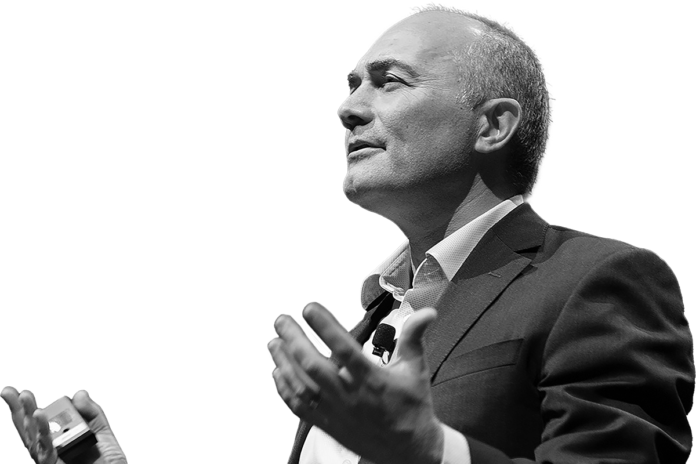Words by Oscar Trimboli
Managers listen to what’s said, and leaders listen to what’s NOT said.
Listening is an art and a science. The neuroscience of listening is interesting, the neuroscience of speaking is truly transformational. You can listen between 3 to 4 times faster than the speaker can talk.
In the workplace, people speak in a range of 125 to 150 words per minute, while they are thinking on average at 900 words per minute. This means that the first thing the speaker says represents only 14% of what they are thinking.
When listening to what the speaker says the first time, you create transactional and symptomatic conversation. These conversations are about listening to what’s top of mind. The consequences of this approach to listening creates discussions that require rework because only the superficial is explored, rather than the systemic issue.
When listening to the UNSAID, you start to explore the missing meaning in the speaker’s mind. Exploring the next 125 to 150 words rather than engaging immediately with the first thing the speaker says will have a bigger impact and paradoxically shorten the meeting.
“Speaking is the rinse cycle for the mind”
There are many elements of the thoughts and concepts that the speaker is struggling to express and explain. It takes time and multiple attempts to describe an idea or topic through speech. When the speaker ultimately describes it the way they actually think about it, you will notice a change in their state and posture. They will audibly exhale when they get to clarity. Some people call it the a-ha moment or the lightbulb moment.
Typically, the speaker will draw in a deep breath and sigh, and then you will hear phrases like:
- “Actually. . .”
- “Also. . .”
- “Maybe . . .”
- “Now that I think about it a little longer. . .”
- “The most important thing is . . .”
- “What I actually want to say is . . .”
- “What matters most to me is . . .”
At this moment, the speaker is accessing what they want to explain and how they need to explain it. As the listener, your role in these moments is to create the space to allow them to access their thoughts rather than only what they said the first time.
Experiment this week and explore what the speaker has not said. Use these phrases.
- “And?”
- “Anything else?”
- “Say more?”
- “Tell me more?”
- “What else?”
Oscar Trimboli is an author, host of the Apple award-winning podcast Deep Listening and a sought-after keynote speaker. He is the author of How to Listen: Discover the Hidden Key to Better Communication


